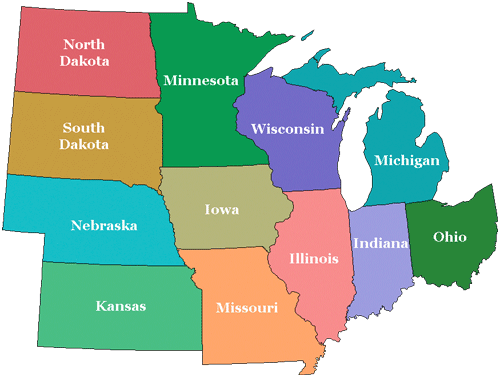 As
part of the old Northwestern Territory, Ohio is defined as one of the Midwestern
states. During the turn of the century, Midwestern life consisted mostly of
farming, yet still like many Midwestern towns, people assumed that one-day
the small towns would be great cities. But, instead the majority of the small
cities stayed small. When farming tools were introduced, farmers did not need
as many workers and people had to move to the next town to find a job. If
the small town was lucky, the growing train companies would come through and
As
part of the old Northwestern Territory, Ohio is defined as one of the Midwestern
states. During the turn of the century, Midwestern life consisted mostly of
farming, yet still like many Midwestern towns, people assumed that one-day
the small towns would be great cities. But, instead the majority of the small
cities stayed small. When farming tools were introduced, farmers did not need
as many workers and people had to move to the next town to find a job. If
the small town was lucky, the growing train companies would come through and
 maybe
even stop in the small town and bring the Ohioans some jobs and new people.
There was definitely a notion of failure among small towns during this time
period because of the unfound expectations that the residents put on themselves.
An important point about Midwesterns and their historical experience is that
“the distinctive social and cultural character of Midwestern small town
life was founded on this different economic experience.” (14)
maybe
even stop in the small town and bring the Ohioans some jobs and new people.
There was definitely a notion of failure among small towns during this time
period because of the unfound expectations that the residents put on themselves.
An important point about Midwesterns and their historical experience is that
“the distinctive social and cultural character of Midwestern small town
life was founded on this different economic experience.” (14)
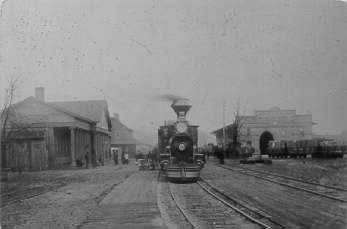 When
Ohio was first settled, it was primary a farming town because of the ideal
farming and herding conditions. The land was first occupied by American Indians,
whose primary resource from this land was corn. When European settlers first
come they had to cut down many trees, so that they could plant on the land.
(15) The land continued to be used primarily for farming.
When
Ohio was first settled, it was primary a farming town because of the ideal
farming and herding conditions. The land was first occupied by American Indians,
whose primary resource from this land was corn. When European settlers first
come they had to cut down many trees, so that they could plant on the land.
(15) The land continued to be used primarily for farming.
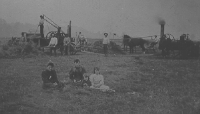 Life
at the turn of the century was definitely a challenging time all over the
country, but with the lack of good farming equipment, the work was almost
unbearable. Wives and children would come out to help their fathers and brothers
on the fields so that they could sell their goods.
Life
at the turn of the century was definitely a challenging time all over the
country, but with the lack of good farming equipment, the work was almost
unbearable. Wives and children would come out to help their fathers and brothers
on the fields so that they could sell their goods.
 Religion
also played a significant role in the Midwestern experience. The two primary
religious groups in Ohio were the Catholics and the Quakers. Regardless of
which one the Ohioans were, the residents followed those rules closely and
made sure that
Religion
also played a significant role in the Midwestern experience. The two primary
religious groups in Ohio were the Catholics and the Quakers. Regardless of
which one the Ohioans were, the residents followed those rules closely and
made sure that 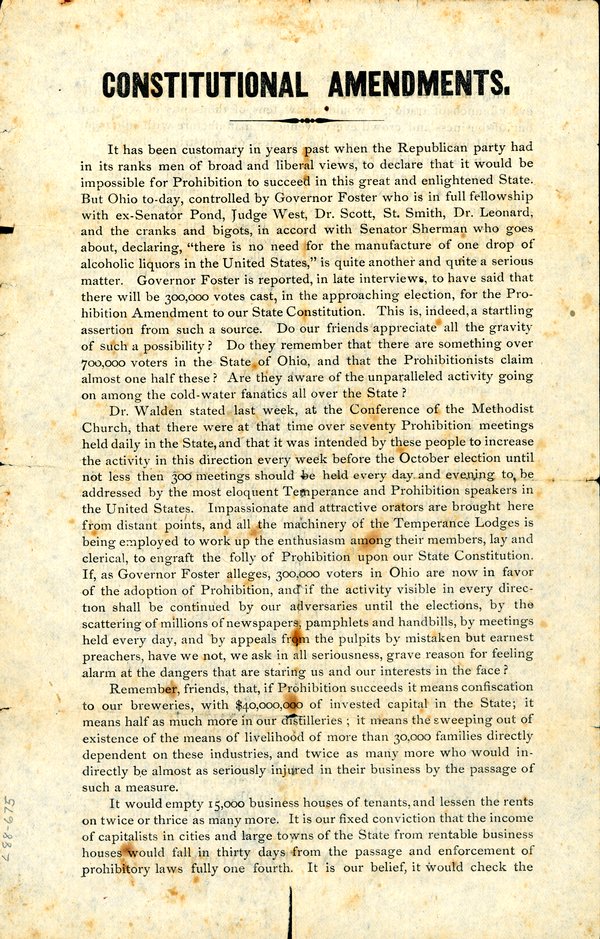 others
did as well. Religion kept many of the small towns together by forming unique
bonds with one another. Religious schools opened up for children and churches
were being built all over the United States. (16)
There were many notions and stereotypes that come along with
the zealous beliefs that the Midwesterns tended to have during the turn of
the century, such as being crazy. These men and particullary women just believed
that they had to protect this country against what was right and what was
wrong. Probihibtion started in Ohio in part to protect the youth against foolish
mistakes.
others
did as well. Religion kept many of the small towns together by forming unique
bonds with one another. Religious schools opened up for children and churches
were being built all over the United States. (16)
There were many notions and stereotypes that come along with
the zealous beliefs that the Midwesterns tended to have during the turn of
the century, such as being crazy. These men and particullary women just believed
that they had to protect this country against what was right and what was
wrong. Probihibtion started in Ohio in part to protect the youth against foolish
mistakes.
 Leisure
time did not happen very often with families that lived in the rural areas.
After working on the farm for 12 hours, the last thing most people wanted
to do was have a drink. Family outings or activities
Leisure
time did not happen very often with families that lived in the rural areas.
After working on the farm for 12 hours, the last thing most people wanted
to do was have a drink. Family outings or activities  were
very rare, so all members of the family would have to participate.
were
very rare, so all members of the family would have to participate.
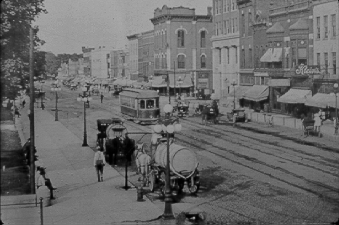 By
the 1910’s people in small towns were being to get restless. They were
living the same day over and over again without any possibility that things
will change. The physical separation from neighbors and the big cities, made
the small towners feel very out of touch. In an effort to make an identity
for themselves, these Midwesterns began to see themselves as simple folk with
great self-control, religious faith, and diligence. The residents also took
great pride in having a clean neighborhood with civic institutions and law
and order (17). They valued their Mainstreets because
that is where all the action took place.
By
the 1910’s people in small towns were being to get restless. They were
living the same day over and over again without any possibility that things
will change. The physical separation from neighbors and the big cities, made
the small towners feel very out of touch. In an effort to make an identity
for themselves, these Midwesterns began to see themselves as simple folk with
great self-control, religious faith, and diligence. The residents also took
great pride in having a clean neighborhood with civic institutions and law
and order (17). They valued their Mainstreets because
that is where all the action took place.